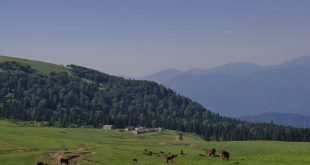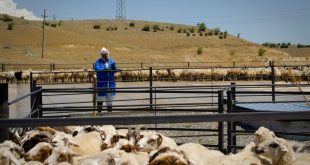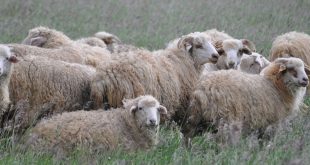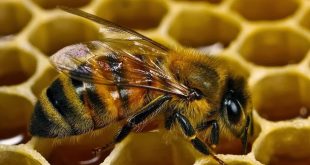29/11/2017
AGRICULTURE, HOME
The SDC funded Alliances Lesser Caucasus Programme of Mercy Corps Georgia has facilitated interventions related to agricultural information since 2008. It has reached at least 279,217 individuals and their households. The estimates are conservative and do not allow for a copying rate between people which is estimated to be 2.6 other people receiving information for every person who has directly read or watched information. The programme is currently focused on maximizing scale and deepening outreach to rural producers and inhabitants and changing how agriculture is reported...
Read More »
29/11/2017
AGRICULTURE, HOME
After identifying the Animal Movement Route (AMR) as a key constraint for the development of the Georgian sheep sector and as a lynchpin for the development of a national animal disease control strategy, the Alliances Lesser Caucasus Programme (ALCP) has advocated the improvement of the Animal Movement Route (AMR) at all levels of government, civil society and private sector stakeholders through the programme Advisory Committee since 2012. As a result, an MOU was signed between the Ministry of Agriculture and National Food Agency and Mercy Corps...
Read More »
29/11/2017
AGRICULTURE, HOME, MARKETS
In 2011, the ALCP (Alliances Caucasus Programme) linked it’s access to finance output with its access to nutrition output (i.e. the hay making machinery equipment needed by SSLP’s to remove a key nutritional constraint to dairy and meat production). High costs and limited or expensive credit meant difficulties in replacing outdated machinery inputs which performed poor and costly hay making services for farmers. Many farmers could not take loans for purchasing livestock, farm inputs, machinery and land due to the high interest rates.
Read More »
12/10/2017
AGRICULTURE, HOME, MARKETS
The EU and Georgia signed an Association Agreement on 27 June 2014. It has entered into force since 1 July 2016. The agreement introduces a preferential trade regime – the Deep and Comprehensive Free Trade Area (DCFTA). This regime increases market access between the EU and Georgia based on having better-matched regulations. In …
Read More »
29/09/2017
AGRICULTURE, HOME, MARKETS
Price of raw tea was around 2.50 GEL / kg. in 2016. As of June 2017, the following products were presented on the market: 25-100 packages of teabags, 50-75-100-grams of loose tea packs. Assortment of black tea is bigger than green tea. Assortment of teabags is bigger than loose tea packs (the number of leaf tea is the smallest). Black tea is the best selling tea, than the green tea. Loose tea packs are the best selling items after the teabags. Number of Georgian and foreign producers are approximately the same. The varieties of tea produced by foreign producers are presented in more shops than Georgian ones.
Read More »
03/10/2017
AGRICULTURE, HOME, MARKETS
Total amount of sheep and goats at the end of 2016 was 936,500 heads. Among them sheep number made up 875,900 heads, goats – 60,600 heads. Among the other regions Kakheti is a leader as per sheep and goats quantity (sheep – 55%, goats – 38,4%). Average price of slaughter meat produced in Georgia was 9.99 GEL/kg at “Fermiskari” in 2016, average consumption price made up 11.85 GEL/kg.
Read More »
02/10/2017
AGRICULTURE, HOME, MARKETS
In 2016 the number of bee families in Georgia made up 205,300 units at the end of the year. According to regions the most number of beehives were in Kakheti, Imereti and Samegrelo-Zemo Svaneti (more than a half of the total number of beehives in these three regions composes 52,2%). In 2016 2,100,000 kg honey had been produced in Georgia. Annually, up to 2 mln t of honey is produced in the world. One of the biggest markets of honey is the European Union – it produced 268 thousand t of honey in 2015; more than 197 thousand t of honey cost up to 200 mln Euros was received via import (data of European statistics).
Read More »
02/10/2017
AGRICULTURE, HOME, MARKETS
Livestock of cattle At the end of 2016 total number of cattle made up 962,700 heads, 509,300 heads of which were female buffalos, 453,400 heads – bulls and oxen. The number of cattle more than 2 years old composed 577,700. Distribution according regions The highest quantity of cattle was fixed …
Read More »
 business.org.ge Portal for Entrepreneurs
business.org.ge Portal for Entrepreneurs







